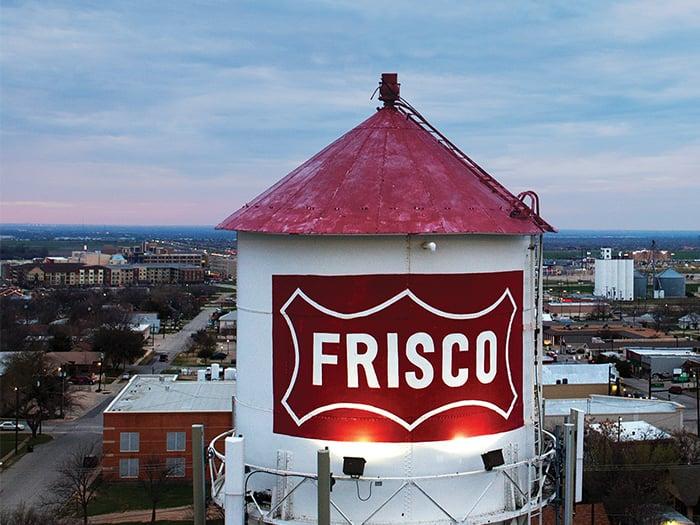Frisco, Texas: Leading the Nation in Safety and Community Well-Being
Frisco, Texas, has recently been distinguished as the safest city in the United States, according to an extensive study featured by Dallas News. This accolade reflects a thorough evaluation of crime statistics and public safety initiatives across American cities. Frisco’s achievement not only highlights its dedication to maintaining a secure environment but also exemplifies how strategic law enforcement and active community participation can foster safer urban living.
Analyzing Frisco’s Crime Statistics in Relation to National Benchmarks
When compared to national crime data, Frisco consistently demonstrates significantly lower rates of criminal activity. The city’s violent crime incidents are approximately 65% lower than the national average, while property crimes occur at nearly half the frequency seen across the country. These figures underscore the effectiveness of Frisco’s comprehensive safety measures and proactive policing.
Below is a detailed comparison illustrating Frisco’s crime rates alongside national averages, showcasing the city’s exceptional safety record:
| Crime Type | Frisco Rate (per 100,000 residents) | U.S. Average (per 100,000 residents) | Percentage Difference |
|---|---|---|---|
| Violent Crime | 150 | 430 | -65% |
| Property Crime | 850 | 1,650 | -48% |
| Burglary | 300 | 660 | -55% |
| Auto Theft | 100 | 240 | -58% |
- Community-Oriented Policing: Enhanced patrols and neighborhood watch initiatives
- Technological Investments: Implementation of surveillance systems and crime data analytics
- Public Engagement Programs: Youth involvement and inclusive safety awareness campaigns
How Community Programs Propel Frisco’s Safety Success
Frisco’s status as the safest city is deeply rooted in the active participation of its residents and local organizations. Neighborhood watch groups have expanded citywide, empowering citizens to stay vigilant and collaborate closely with law enforcement. This grassroots involvement strengthens community bonds and serves as a frontline deterrent against criminal activity.
Moreover, the city champions innovative outreach programs targeting young people, focusing on conflict resolution, mental health education, and positive social engagement. Partnerships between nonprofits and municipal agencies facilitate workshops and volunteer patrols, fostering a culture of prevention and mutual support that has contributed to a marked decline in crime.
- Neighborhood Watch Groups: More than 50 active teams across Frisco
- Youth Safety Education: Over 200 sessions conducted annually
- Volunteer Patrols: Approximately 150 committed community members
| Program | Effectiveness | Annual Engagement |
|---|---|---|
| Neighborhood Watch | 15% reduction in local crime | 1,200 residents involved |
| Youth Outreach | Enhanced safety in schools | 800 young participants |
| Mental Health Awareness | Lowered violence-related incidents | 500 attendees |
Law Enforcement Innovations Strengthening Public Safety
Frisco’s police department employs a multifaceted strategy that blends community engagement with cutting-edge technology and ongoing officer training. This approach has cultivated a cooperative relationship between law enforcement and residents, enhancing trust and enabling swift responses to emerging threats. Transparency and data-driven tactics allow for efficient resource deployment and preemptive action in high-risk areas.
Core elements of Frisco’s policing model include:
- Community Collaboration: Regular town halls and neighborhood watch support encourage public involvement.
- Advanced Surveillance: Predictive analytics and live monitoring facilitate rapid crime detection.
- Officer Development: Continuous training in de-escalation and cultural competency improves interactions.
| Strategy | Outcome | Result |
|---|---|---|
| Community Policing | Enhanced public trust | 15% rise in resident cooperation |
| Surveillance Technology | Accelerated crime response | 20% faster intervention times |
| Proactive Officer Training | Better conflict management | 30% drop in use-of-force cases |
Strategies to Preserve and Enhance Frisco’s Safety Excellence
To uphold its reputation as the nation’s safest city, Frisco must continue to emphasize community involvement and embrace technological advancements. Expanding surveillance capabilities and strengthening alliances with local organizations will improve real-time crime tracking and prevention. Additionally, maintaining transparency through frequent public safety updates will bolster community confidence and encourage ongoing collaboration.
Recommended actions for sustained safety leadership include:
- Broadening neighborhood watch and volunteer patrol coverage to enhance vigilance.
- Scaling youth engagement programs focused on education and positive social interaction.
- Allocating funds for continuous police training in de-escalation and community relations.
- Incorporating urban design principles that promote well-lit, accessible, and secure public spaces.
| Initiative | Focus Area | Anticipated Benefit |
|---|---|---|
| Neighborhood Watch Expansion | Community Engagement | Heightened local vigilance |
| Youth Outreach Programs | Education & Prevention | Decline in juvenile offenses |
| Enhanced Police Training | Law Enforcement Skills | Better conflict resolution outcomes |
| Urban Safety Design | Public Space Security | Safer streets and recreational areas |
Summary: Frisco’s Model for a Secure and Thriving Community
Frisco’s designation as America’s safest city is a testament to its unwavering dedication to public safety and community well-being. Through a blend of innovative policing, robust community programs, and strategic urban planning, the city has set a high standard for safety that other municipalities can emulate. This recognition not only celebrates Frisco’s current achievements but also serves as a foundation for continued progress in creating a secure, welcoming environment for all residents.







